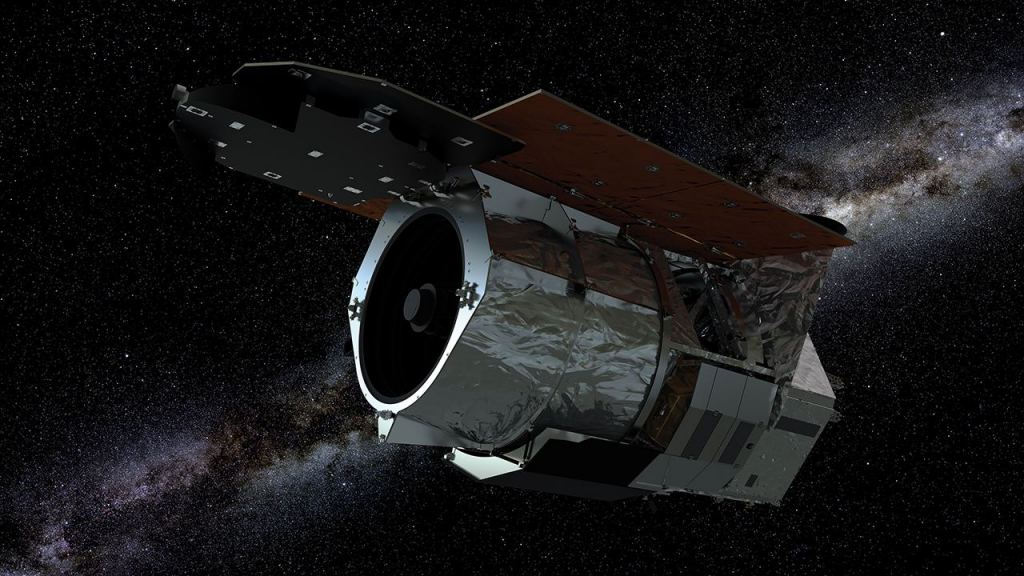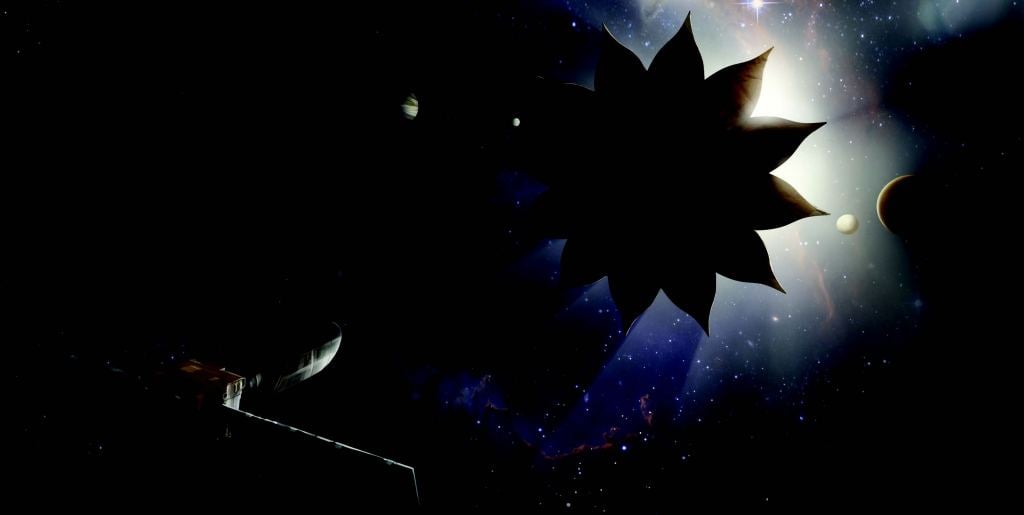NASA's Nancy Grace Roman Space Telescope is getting closer and closer to its launch date in 2025. This Hubble-class wide-field infrared telescope is going to help astronomers discover the nature of dark energy, discover planets, and perform large area surveys of the night sky.
But even with its power, the telescope will be limited in its ability to examine planets.
A team of engineers is proposing to fly a follow-on mission to Nancy Grace: a Starshade. This petal-shaped spacecraft could fly in formation with the telescope, blocking the light from stars, and helping it see the fainter planets nearby.
An exceptional telescope gets an upgrade? That seems like a win-win.
One of the next observatories to help aid humanity's understanding of the cosmos is the Nancy Grace Roman Space Telescope (NGRST), formerly known as the Wide Field InfraRed Survey Telescope (WFIRST). The name change was to honor the legacy of Dr. Nancy Grace Roman, known today as the 'Mother of Hubble' for her work in making Hubble happen. She created NASA's space astronomy program, became the first female executive at NASA, and served as NASA's first Chief of Astronomy throughout the 1960s and 1970s. (Rehm)
"Nancy Grace Roman is a role model. We're naming this mission after Nancy Grace Roman because of her great accomplishments. I think it's really helped younger woman [sic] to see that it's possible for a woman to succeed, it's possible for a woman to be the best," said Dr. Julie McEnery, Deputy Project Scientist for the Roman Space Telescope. (Rehm)
NGRST has a planned mission time of five years, but as always, we can hope for a longer duration. Its current planned launch date is in 2025, launching out of Cape Canaveral on an EELV (Evolved Expendable Launch Vehicle). It will be headed out to the second Sun-Earth L2 Lagrange point, which is directly opposite the Sun, on the other side of the Moon. This location is ideal for keeping instruments cool enough that the observatory will be able to gather 10x the data that Hubble can. During its five-year mission it's expected to measure light from a billion galaxies.
That's out of anywhere from hundreds of billions to two trillion galaxies in the Universe, just to put things into perspective. (Strickland)
This telescope is already impressive, just as it is.
The NASA observatory will have two instruments on board, The Wide Field Instrument and The Coronagraph Instrument. The Wide Field Instrument has a 300-megapixel camera which will give it a 100x greater field of view than the Hubble infrared instrument. This equals more sky observed in less time. In five years it will have imaged over 50x as much sky as Hubble observed in its first thirty years.
The Coronagraph Instrument (CGI) will perform high-contrast imaging and spectroscopy of dozens of nearby exoplanets. It will eliminate the glare of nearby stars, allowing it to see planets that are almost a billion times fainter than their host star. The results from the CGI will help future missions to observe and characterize rocky planets in the habitable zone of stars (an area where the temperature is at the right level to allow liquid water to form, which is considered a key ingredient for life). (Krishna)
The NGRST will be conducting Near-Infrared surveys to explore nearby stars and distant galaxies. The observatory will help in the search for what dark matter and dark energy are, and a Microlensing survey is expected to find ~2600 exoplanets. This is all well and good.
But it could be better.
There is a proposal by Andrew Romero-Wolf et al., to develop what is being called the Starshade Rendezvous Probe. This would be a 26 meter (~85 feet) free-flying device that would allow the Nancy Grace Roman Space Telescope to detect Earth-like exoplanets in the habitable zones of their host star and increase sensitivity to spectrally characterize Earth-like exoplanets. It would also be able to detect the dust surrounding Earth-like exoplanets. This dust is small in mass but has a large area which makes it easier to observe than the planet itself.
Planets are about 10 billion times dimmer than the light from their parent star. Starshades work by blocking that light, similar to how an eclipse works. During an eclipse, it's easier to see what's happening around the Sun without its glare. When a starshade is deployed, it allows the planets around a star to be directly imaged, and also provides the capability to analyze the atmospheres of exoplanets.
The starshade isn't a new concept. NASA has already been working on a petal-shaped version. This shape is designed to decrease the bending of light waves allowing it to image planets without being overwhelmed by their parent starlight. (Rodriguez) Northrop Grumman is helping to develop the starshade, which is taller than a 15-story building, and would be flying at a distance of 20,000 - 40,000 kilometers (~12,400 miles - ~24,800 miles) from its observatory. It is expected to help detect extrasolar planets within 50 light years from us. (Northrop Grumman)
There are some hurdles to overcome, though. This is technology that has never been built before and requires very detailed engineering. Keeping the starshade and observatory in perfect alignment will be just one of the difficult tasks engineers will face. JPL engineer Michael Bottom put it best when he said: "If the starshade were scaled down to the size of a drink coaster, the telescope would be the size of a pencil eraser and they'd be separated by about 60 miles [100 kilometers]. Now imagine those two objects are free-floating in space. They're both experiencing these little tugs and nudges from gravity and other forces, and over that distance we're trying to keep them both precisely aligned to within about 2 millimeters." (NASA)
https://www.youtube.com/embed/vW8pi8WMu0s?list=PLTiv_XWHnOZp7htSzWONiegbedmQ_60LG
And then there's the unfurling of the starshade. The above video demonstrates just what the starshade will have to do to deploy properly, and these are just the first baby steps. By the time a starshade is ready for a mission, one can only imagine how many intricate steps, motors, and actuators will be required for it to deploy properly. If the James Webb Space Telescope's sunshield unfurling process is any indicator, this won't be an easy task.
Even with the next flagship observatory such as HabEx or Luvoir, there won't be another observatory capable of detecting Earth-like exoplanets within the next decade. The hope is that this Starshade Rendezvous Probe will launch three years into the NGRST mission, giving it at least two years to help detect those Earth-like exoplanets.
Our understanding of the Universe expands with each new observatory being launched into space. Technology like the starshade being proposed will be a huge help in advancing our knowledge.
Credits
ArXiv: Starshade Rendezvous: Exoplanet Sensitivity and Observing Strategy
NASA Telescope WFIRST Renamed After 'Mother of Hubble' Nancy Grace Roman
Flower Power: NASA Reveals Spring Starshade Animation
There May Be Fewer Galaxies In The Universe Than We Thought
 Universe Today
Universe Today


